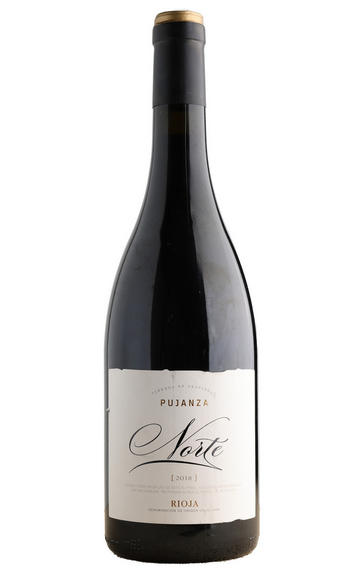
2018 Norte, Bodegas Pujanza, Rioja, Spain
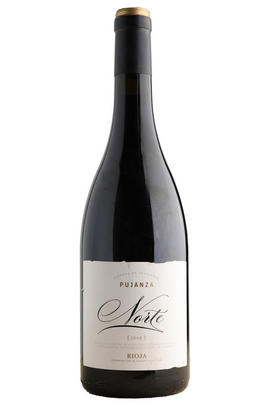
Critics reviews
I was really looking forward to the 2018 Norte, the top-of-the-range red from a north-facing plot in Laguardia at some 720 meters in altitude, from a vintage with similarities to the 2016 I love. The wine has a rare combination of power and elegance, of ripeness and freshness that denotes a special place. Like the rest of reds, it fermented with indigenous yeasts in stainless steel, with malolactic in those same containers followed by 12 months in French oak barrels (slightly less than in the past) and eight months in concrete.
I caught this wine in a slightly awkward moment; the oak was quite noticeable and there was a bit of volatility. It was bottled later because of COVID-19, so it had been bottled a couple of weeks before I tasted it. In any case, San Pedro didn't use any new oak in this wine or, as a matter of fact, in any of the other wines, and the time in barrel was also shortened in this wine. The palate has the balance, the freshness and the depth to overcome this, and I'm sure this wine is going to bloom with a little more time in bottle.
The wine is not a powerhouse; this is a more delicate year. With a couple of hours in the glass, the wine shows a lot more poise and harmony, which only reinforced my beliefs. 11,000 bottles produced.
Drink 2021 - 2030
Luis Gutiérrez, Wine Advocate (October 2020)
100% Tempranillo from single plot at 720 m above sea level in Laguardia. Spontaneous alcoholic fermentation and malolactic conversion in stainless-steel vats. Aged in French oak barrels for 12 months, then 8 months in concrete vats. 11,000 bottles.
Tasted blind. Quite generous in fruit and concentration, and well-judged wood. Tannins with sweetness and balanced with freshness. Quite full of vibrant fruit. Very good use of oak, present and elegant. Lots of juiciness and quality of fruit in a powerful rioja style.
Drink 2021 - 2030
Ferran Centelles, JancisRobinson.com (March 2021)
Really clear and beautiful on the nose with blackberries and blueberries, as well as some chocolate and lavender undertones. Medium body, firm and silky tannins and a fresh finish. Lovely texture at the end.
Drink now or hold
James Suckling, JamesSuckling.com (September 2021)
About this WINE
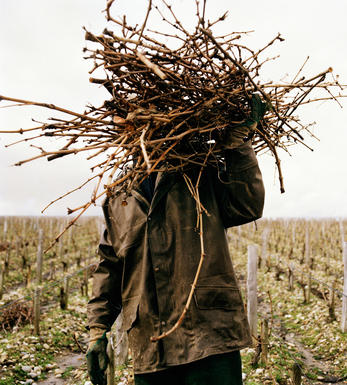
Bodegas y Viñedos Pujanza
Founded in 1998 by Carlos San Pedro, Bodegas y Viñedos Pujanza is a renowned Spanish winery located in the village of Laguardia, in the heart of the Rioja Alavesa subregion. The estate’s vineyards are spread across various parcels; each carefully selected to represent the area’s diverse microclimates and soil types.
The winery focuses on crafting wines from traditional Rioja grape varieties, including Tempranillo, Grenache, and Graciano. They also work with newer plantings of Viura and Malvasía for their white wines.
Emphasising minimal intervention in both the vineyard and the winery, Bodegas Pujanza places great importance on respecting the natural balance of the vines and allowing the grapes to express their characteristics fully. Carlos San Pedro’s approach to winemaking is rooted in a deep respect for the land and a commitment to sustainable practices. The winery employs modern technology and techniques while remaining true to Rioja’s winemaking traditions.
Among the notable wines produced by Bodegas Pujanza are their single-vineyard wines, or “parcelas,” which represent specific plots with distinct terroir attributes. These wines often receive critical acclaim and are sought after by wine enthusiasts and collectors alike.
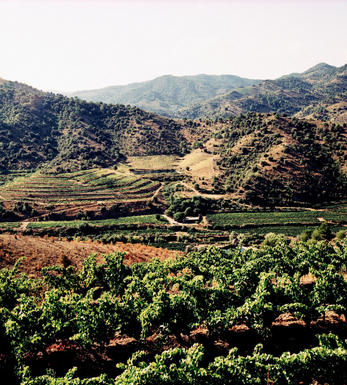
Rioja
Rioja is known primarily for its reds although it also makes white wines from the Viura and Malvasia grapes and rosés mainly from Garnacha. Most wineries (bodegas) have their own distinct red wine formula, but are normally a combination of Tempranillo, Garnacha and sometimes Graciano. Other red varieties recently approved into the Denominación de Origen Calificada (DOCa) regulations are the little-known Maturana Tinta, Maturana Parda, and Monastel (not to be confused with Monastrell). The most important of these by far is the king of native Spanish varieties, Tempranillo, which imbues the wines with complex and concentrated fruit flavours.
The Garnacha, meanwhile, bestows its wines with warm, ripe fruit and adds an alcohol punch. Graciano is an améliorateur grape (one that is added, often in small proportions, to add a little something to the final blend) and is found mainly in Reserva and Gran Reserva wines, albeit in small quantities (two to five percent), adding freshness and aroma, and enhancing the wines' ageing potential.
Crianza wines are aged for one year in oak followed by maturation for one year in bottle before being released for sale. Reservas must undergo a minimum of three years’ ageing before release, at least one of which should be in oak casks. Finally, Gran Reservas, which are only produced in the finest vintages, must spend at least five years maturing, of which at least two must be in oak.
Geographically, Rioja is divided in to three districts: Alavesa, Alta and Baja. Rioja Alavesa lies in the northwest of the La Rioja region in the Basque province of Álava. Along with Rioja Alta, it is the heartland of the Tempranillo grape. Rioja Alta, to the north-west and south of the Ebro River in the province of La Rioja, stretches as far as the city of Logroño. Elegance and poise is the hallmark of wines made here with Rioja Alta Tempranillo. Mazuelo (Carignan) is occasionally added to wines from this area to provide tannins and colour. Rioja Baja, located to the south-east, is the hottest of the three districts and specialises in Garnacha.
Rioja has witnessed a broad stylistic evolution over the years. The classic Riojas pioneered by Murrieta and Riscal in the 19thcentury were distinguished by long oak-barrel-ageing whereas the modern style, represented by Marqués de Cáceres since 1970, showcases the fruit and freshness of Tempranillo, keeping oak ageing to the legal minimum. The post-modern school that emerged in the late 1990s from producers like Palacios Remondo and Finca Allende concentrate on making wines from old vines or specific vineyard plots to accentuate the terroir, and using larger proportions of minority varietals such as Graciano.
The alta expression wines, pioneered by Finca Allende (among others) and later taken up by almost every other producer in Rioja, represent the newest flagship category in Rioja. Alongside the traditional Gran Reservas, alta expression wines are limited production and come from low-yielding vines, often from a single vineyard, and are hand-picked. Excellent examples of this style are Artadi's Pagos Viejos and El Pison.
However, modernisation has not held back the continuation of successful traditional styles as well. Happily long-established houses such La Rioja Alta, CVNE and Marques de Vargas continue to make graceful, old style wines better than ever before.
White Rioja is typically produced by the Viura grape which must comprise at least 51 percent of the blend; the rest can be made up by other, recently-authorised varieties, namely Sauvignon Blanc, Chardonnay and Verdejo, as well as the native Maturana Blanca, Tempranillo Blanco, and Turruntés (not to be mistaken for Torrontés).
Recommended Producers:
Finca Allende, Amezola de la Mora, Artadi, CVNE, Marqués de Vargas, Palacios Remondo, La Rioja Alta, Murrieta.
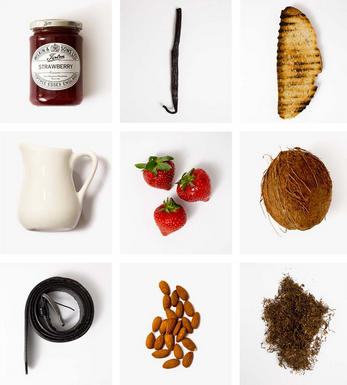
Tempranillo/Tinto Fino
A high quality red wine grape that is grown all over Spain except in the hot South - it is known as Tinto Fino in Ribera del Duero, Cencibel in La Mancha and Valdepenas and Ull de Llebre in Catalonia. Its spiritual home is in Rioja and Navarra where it constitutes around 70% of most red blends.
Tempranillo-based wines tend to have a spicy, herbal, tobacco-like character accompanied by ripe strawberry and red cherry fruits. It produces fresh, vibrantly fruit driven "jovenes" meant for drinking young. However Tempranillo really comes into its own when oak aged, as with the top Riojas where its flavours seem to harmonise perfectly with both French and American oak, producing rich, powerful and concentrated wines which can be extraordinarily long-lived.
In Ribera del Duero it generally sees less oak - the exception being Vega Sicilia where it is blended with Cabernet Sauvignon and Merlot and then aged for an astonishing 7 years in oak and is unquestionably one of the world`s greatest wines.


Buying options
Add to wishlist
Description
I was really looking forward to the 2018 Norte, the top-of-the-range red from a north-facing plot in Laguardia at some 720 meters in altitude, from a vintage with similarities to the 2016 I love. The wine has a rare combination of power and elegance, of ripeness and freshness that denotes a special place. Like the rest of reds, it fermented with indigenous yeasts in stainless steel, with malolactic in those same containers followed by 12 months in French oak barrels (slightly less than in the past) and eight months in concrete.
I caught this wine in a slightly awkward moment; the oak was quite noticeable and there was a bit of volatility. It was bottled later because of COVID-19, so it had been bottled a couple of weeks before I tasted it. In any case, San Pedro didn't use any new oak in this wine or, as a matter of fact, in any of the other wines, and the time in barrel was also shortened in this wine. The palate has the balance, the freshness and the depth to overcome this, and I'm sure this wine is going to bloom with a little more time in bottle.
The wine is not a powerhouse; this is a more delicate year. With a couple of hours in the glass, the wine shows a lot more poise and harmony, which only reinforced my beliefs. 11,000 bottles produced.
Drink 2021 - 2030
Luis Gutiérrez, Wine Advocate (October 2020)
wine at a glance
Delivery and quality guarantee